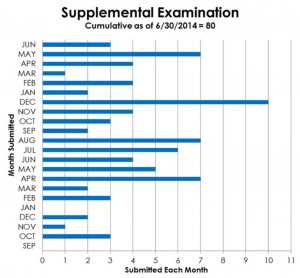One of the few benefits to inventors in the AIA was the creation of Supplemental Examination, a procedure by which a patent owner could “cure” possible inequitable conduct. However in two years, only 80 requests for Supplemental Examination have been filed.
Of course the one reason why Supplemental Examination has languished is the Therasense’s but for materiality standard. See, Therasense v. Becton Dickinson 99 U.S.P.Q. 2d 1065, 1074 (Fed. Cir 2011). After Therasense, If the invention is not found unpatentable over the reference, then that reference is not material (of course even if the patent survives the litigation, it might still be found unpatentable over the reference under the Patent Office’s lower evidentiary standard.
Of course there are other ways to commit inequitable conduct besides failing to disclose material prior art, such as false claim of small entity status (Outside the Box Innovations v. Travel Caddy), false statements regarding late payment of maintenance fees (Network Signatures, Inc. v. State Farm Mut. Auto. Ins. Co.), false statements in supporting declarations (eSpeed v. Brokertec); failure to disclose the relationship between the declarant and the applicant (Ferring B.V. v. Barr Laboratories, Inc.).
With just 80 takers in over two years, Supplemental Examination seems like a solution in search of a problem.

